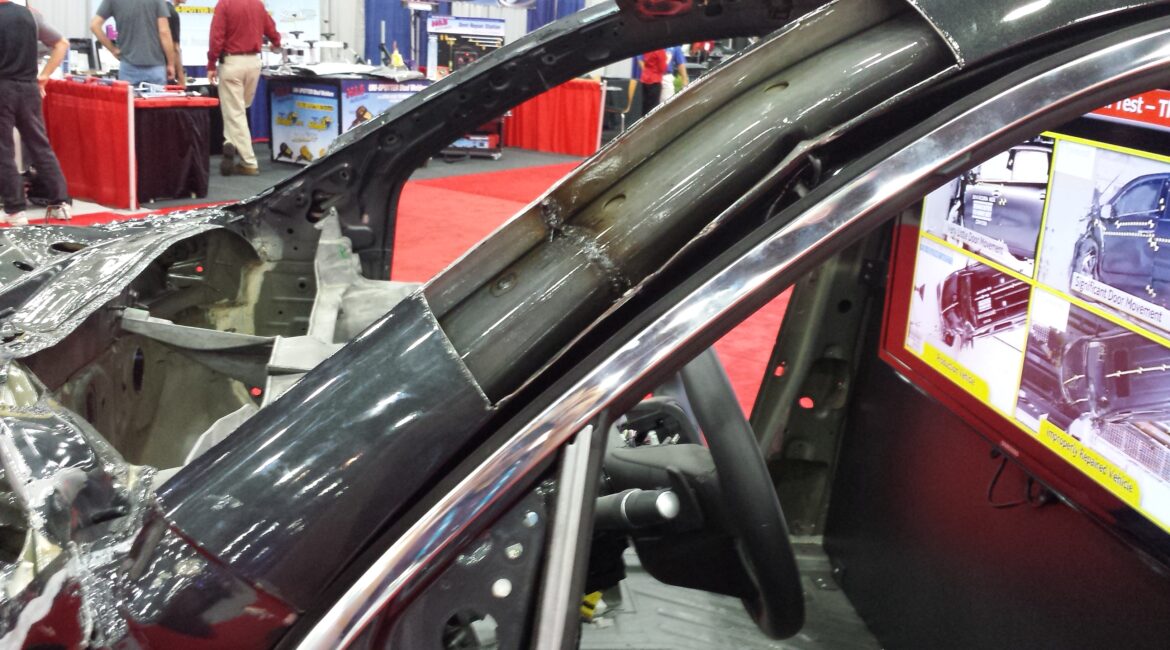Getting Your Car Repaired
Several years ago when you would get your car repaired and depending on the size of the damage, technicians would perform a repair procedure known as “sectioning.” This type of repair would involve cutting into the old section and weld in a new section that would be taken from a junkyard vehicle that didn’t have the same damage as your car. It would be significantly faster and cheaper compared to replacing some damaged vehicle parts or re-straightening. Sectioning was even considered a perfectly acceptable repair for quite some time until the late 2000s when high strength steel would be seen in cars.
Here at 3D Collision Centers, we’ve had Pennsylvania drivers who have come in our shop after they’ve been a victim of bad collision repair. Proper car repair requires extensive training on behalf of the technicians, otherwise, they’ll simply get straight to work on your car out of “experience.” However, if a technician fails to look up specific repair procedures laid out by your car’s manufacturer, known as OEM repairs, it will significantly increase your risk of getting involved in an accident. Not to mention, the overall structural integrity of your car will be compromised.
Knowledge Is Power
We want you to feel more confident going into the repair process, which is why we write about specific repair procedures. Not knowing about certain critical repairs could be the determining factor in what happens to your car in the repair process. You deserve to know, just like you should never settle for anything less than an OEM repair.
What Is Full-Body Sectioning?
According to I-CAR, “full-body sectioning, often referred to as clipping, is the process of joining large assemblies cut from separate vehicles. This involves cutting through multiple panel layers in a combination of A-, B-, C-, and D-pillars, the quarter panels, the rocker panels, and across the floor plan.”
As we described above, full-body sectioning/clipping is the process in which large removed parts from different cars are joined together onto a single vehicle to “repair” the damaged area(s). A technician will then take these different portions from a few different cars and weld them onto your car to finish the “repair.”
Why Full-Body Sectioning Should Never Be Done
No matter how big or small the repair is, there’s never a time that calls for full-body sectioning for in the repair process. There are no OEMs that support it, no matter the size of the repair, as it is not an approved repair method from any car manufacturer. It is “not a safe or viable repair option and should not be done, under any circumstances,” according to I-CAR.
The photos below are what full-body sectioning/clipping looks like. It might as well be named the Frankenstein of car repair:
When parts are welded onto your car, primarily full-rear or full-front body sections, it requires the technician to make several different joints (or spot welds) “in multiple structural panels and reinforcements” (I-CAR). Cars today are manufactured with a combination of high- and ultra-high-strength steels, aluminum, and carbon fiber. This material combination is what works together with the advanced safety features built into your car to provide you with the highest level of safety. Using anything other than these exact materials will not only increase your risk of getting involved in an accident, but the overall structural integrity of your car will no longer be the same. Following OEM repair procedures is not just about quality, but maintaining the same level of safety your car was designed to have.
Here’s an example: if your car needed to have doors and the rear bumper replaced, you would only want it repaired with the same doors and bumper it was manufactured with. Full-body sectioning would use doors and a rear bumper from some other car that might not even be the same manufacturer and put that on your car instead. This is why there are several published warnings from car manufacturers against full-body sectioning repairs.
What Does This Means For Pennsylvania Car Owners?
We wish we could say full-body sectioning/clipping is an outdated repair practice that you rarely see anymore. However, many repair shops still perform this repair in an effort to meet the insurance company’s unrealistic deadline. This is why it’s critical you know exactly what is going to be done to your car so your car never has to look like the above photos.
Here at 3D Collision Centers, we refuse to perform full-body sectioning on any car that comes into our shop. This repair is extremely dangerous and we refuse to take any risks in the repair process. Our team of technicians is all I-CAR Gold Class certified, which is the highest level of certification an auto repair technician can receive.
We will work with you and your insurance company to make sure any question is answered. You deserve to take your car to a place where safety and quality are the top priorities in the repair process. That’s why we’re here to help and show you the 3D Difference.
We have 7 different locations conveniently located across Delaware, Chester, and Montgomery counties so we can effectively serve our Pennsylvania customers.
Feel free to give us a call at (877)-692-7776. For a list of the phone numbers for each of our 7 different locations and to schedule your free estimate, click here.
We look forward to hearing from you!







